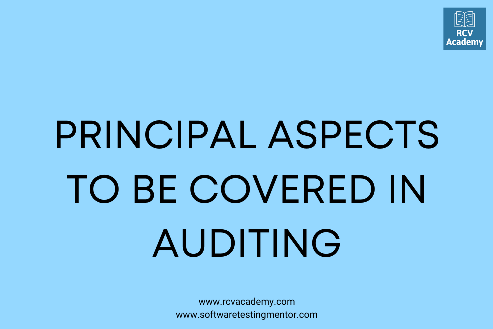In this tutorial, we will learn about the principles of the internal control system of the concepts that require management to set procedures in place to ensure company assets are safeguarded.
In other words, these are the principles management uses to establish the ways to protect company assets.
The main principles of the internal control system:
- Establishment Responsibilities.
- Maintain Records.
- Ensure Assets by bonding key employees.
- Segregate duties.
- Mandatory employee rotation.
- Split related party responsibility.
- Use technological controls.
- Perform regular independent reviews.
Specific organizational devices are considered as necessary as fundamental principles of the internal control system. It is to note that:
- Practically the physical handling of an asset should separate from the accounting work, which should be done by a separate hand. The conclusion between a person handling an asset and other performing accounting work in relation there should be avoided.
- The work should divide between persons that another checks the work done by one.
Thus, the result expected from the work done and check can form a basis for the reliability of records and reports maintained in the business. This practice is sound in the sense that one does can be compared well with the results obtained by another.
It is a list of the most common and influential ones. These principles are the basis by which management uses to create and implement the internal controls it establishes. In other words, these are the basic ideas of authorities. They are not controls in and others themselves. Management must take these ideas and apply them to their specific business. For example:
Segregation of duties is one of the most recognizable and standard controls in most organizations so that we will look at that one. It’s an excellent control to make sure that the recording and record-keeping functions are separate from the actual handling of cash.
It is why the cashier is in charge of collecting cash from customers and the possibility of delivering it to the bank deposit box. The bookkeeper or the accounting department is in the cost of recording the cash receipts and doing bank reconciliations.
This way, one person can’t take the money from the customer, embezzle it, and cover up the thief with fraudulent bookkeeping. If two people perform these jobs, the only way fraud will be able to work if each person is in cooperation with the other. Two colluding employees are far less likely than a single employee stealing.
It is just one example of how the segregation of duties principle can apply to a company’s internal control procedures.
It is the process designed to ensure reliable financial reporting, effective and efficient operations, and compliance with applicable laws and regulations. Safeguarding assets against theft and unauthorized use, acquisition, or disposal is also part of internal control. The management style and the expectations of upper‐level managers, particularly their control policies, determine the control environment.
An active control environment helps ensure that established policies and procedures follow. The control environment includes management’s integrity, ethical values, and philosophy, a defined organizational structure with competent and trustworthy employees, and the assignment of authority and responsibility.




